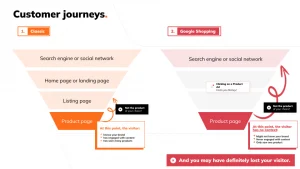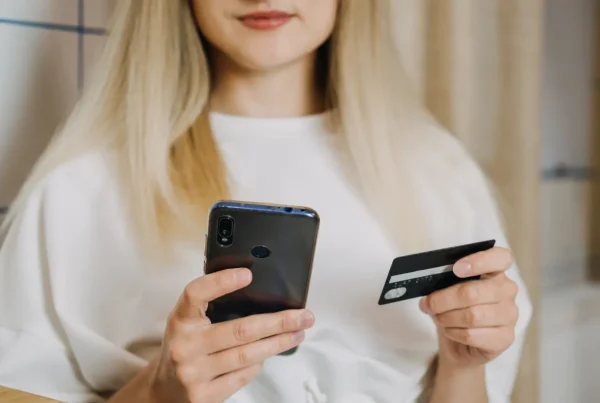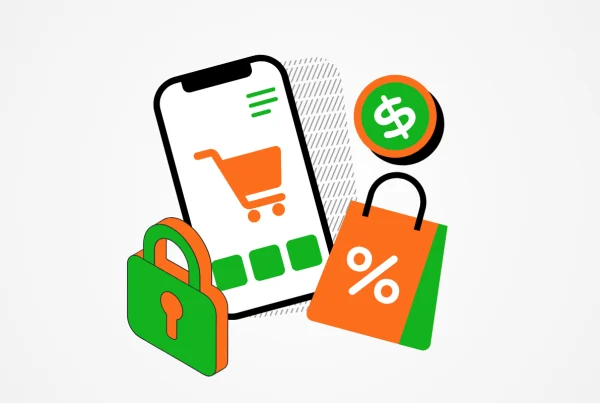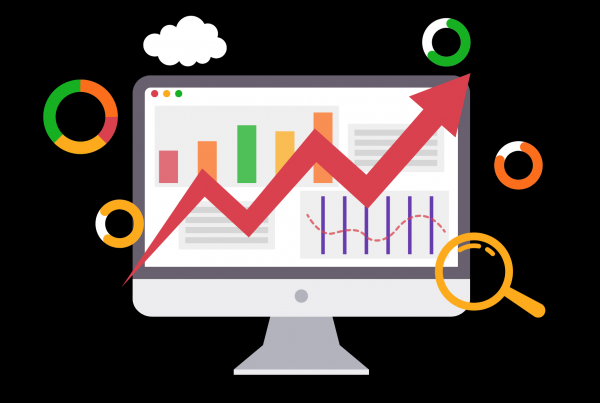How to Drastically Reduce Bounce Rates and Boost ROAS in Google Shopping Campaigns with Vmax
Estimated reading time: 6 minutes

Attracting visitors to your website through Google Shopping campaigns is only half the battle. The real challenge? Keeping them engaged on the product page to convert. If you’ve noticed that visitors coming from Google Shopping are bouncing off your site more than from other channels, you’re not alone. The average bounce rate for Google Shopping campaigns is a staggering 77%.
At DMEXCO 2024, Verbolia’s co-founder, Pierre-Olivier, delved into this challenge and introduced our newest solution: Vmax, Verbolia’s innovative tool designed to optimize your product pages based on the specific needs of users coming from paid channels like Google Shopping. Missed the event? No worries! If you couldn’t attend the conference, here’s a complete wrap-up of the key insights shared during the session, so you won’t miss out on how Vmax can transform your Google Shopping campaigns and take your ROAS to the next level.
Why Visitors Bounce from Google Shopping Campaigns
One of the key reasons visitors bounce from Google Shopping is simple: product pages aren’t built like landing pages. Unlike organic search visitors, who may have already interacted with your brand and have a broader understanding of your products, Google Shopping visitors are often seeing your brand for the first time. They land directly on a product page without context, making it crucial for that page to grab attention and deliver value immediately.

Without the right optimizations, visitors may feel disconnected or uninterested, leading them to hit the back button and leave your site. And since you’ve already paid for that click, every bounce is a lost opportunity.
How Vmax Revolutionizes Google Shopping Campaigns
This is where Vmax steps in. With Vmax, Verbolia offers an innovative approach to tackle this issue. Instead of treating every product page the same, Vmax allows you to tailor each page based on the product and the channel the visitor came from. Here’s how it works:
Dynamic Product Page Layouts
With Vmax, you can customize different aspects of your product pages to cater to specific user needs. For example, for visitors coming from Google Shopping, you can enlarge product images, adjust color schemes, or hide certain elements like descriptions to create a cleaner and more engaging experience.
Advanced A/B Testing
Vmax allows you to run A/B tests at a granular level. You can run these tests product-by-product, ensuring that each item in your catalog has an optimized design for its unique audience.
Tailored Product Recommendations
With Vmax, recommendations go beyond the usual “you might also like” options. You can inject dynamic filters and personalized recommendations to ensure the user sees products that are more relevant to their search, increasing the chances of a conversion.
Real-Time User Engagement Monitoring
The power of Vmax lies in its engagement tracking. Every time a user interacts with your page, Vmax tracks their behavior to identify which design or recommendation is driving the most engagement. Over time, the system learns and prioritizes the most successful variations, ensuring each visitor sees a version of your page that’s optimized for conversion.
Blog article – 10 Ways To Decrease Your eCommerce Bounce Rate – And Increase Your Conversions
Discover the steps you can take to reduce the bounce rate of your eCommerce website and, in short, keep your visitors engaged so that they not only make a purchase, but become happy repeat customers.
The Results: Lower Bounce Rates, Higher Conversions, and Improved ROAS
The impact of Vmax is undeniable. By using tailored product pages and advanced A/B testing, companies that have adopted Vmax, such as Boohoo or Galeria, have seen a drastic reduction in bounce rates and a significant increase in conversions. Most importantly, Vmax consistently boosts the Return on Ad Spend (ROAS) by at least 15%, making it a must-have tool for e-commerce businesses relying on Google Shopping and other paid advertising channels.
Example of Vmax transformation: before and after.
Why You Need Vmax for Your Google Shopping Campaigns
Traditional product pages simply don’t cut it anymore, especially when dealing with visitors coming from paid channels like Google Shopping. These users need a unique experience—one that engages them immediately and encourages them to explore more of your site. With Vmax, you can provide just that by personalizing product pages, running granular A/B tests, and constantly optimizing based on real-time user data.
 Want to See Vmax in Action?
Want to See Vmax in Action?
Ready to transform your product pages and boost your Google Shopping campaigns? Request a demo today and discover how Vmax can lower your bounce rates, increase conversions, and boost your ROAS by 15% or more. Don’t miss the chance to elevate your e-commerce performance!
Conclusion
Google Shopping is a powerful tool for driving traffic, but if your visitors are bouncing too fast, you’re leaving conversions—and money—on the table. By using Vmax to tailor your product pages to each visitor’s journey, you can lower bounce rates, increase conversions, and improve your overall ROAS. Don’t settle for one-size-fits-all product pages; with Vmax, every product can have its own optimized experience.
Interested in watching Verbolia’s full conference from DMEXCO 2024? We explored how to optimize ROAS for Google Shopping campaigns and turn your product pages into high-converting landing pages. Catch the full session now!
About The Author
How can Verbolia help your e-commerce platform.


 Want to See Vmax in Action?
Want to See Vmax in Action?

